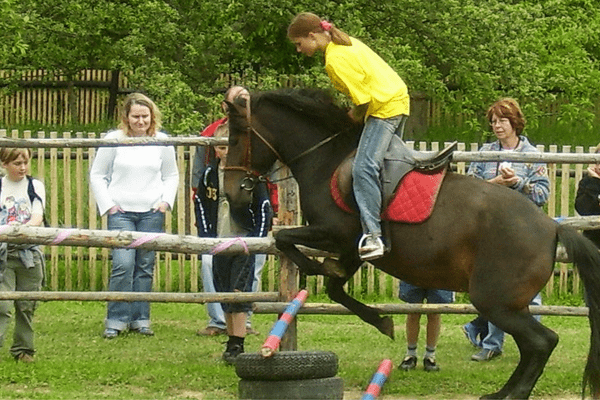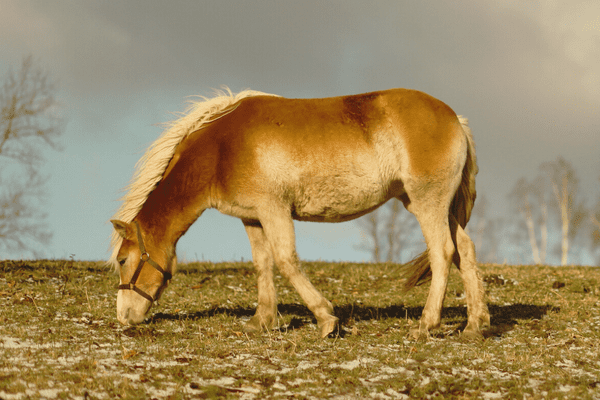Tucked within the rugged Carpathian Mountains is the Hucul pony, a symbol of resilience and strength. Also known as the Carpathian pony, Huculska, or Huțul, this breed is a living legacy of the Hutsul people. With a robust build and unmatched endurance, the Hucul not only represents the beauty of the Carpathians but also the rich tapestry of its indigenous culture. Join us as we explore the tales this equine marvel carries in its stride.
History:
Origins & Historical Significance
Ancestral Lineage: The Hucul pony recalls the former Tarpan, offering an insight into ancient species of equine species.
Carpathian Roots: Hucul’s story begins in the Carpathian Mountains spanning regions in Ukraine, Poland, Slovakia and Romania – its home since ancient times – which have witnessed empires rise and fall along their serpentine paths – where its descendants have successfully navigated all their challenges with grace.
Roman Monuments: Historians speculate that Hucul horses could be Dacian draft horses immortalized on monuments commissioned by Roman Emperors like Domitian and Trajan, leaving their mark in ancient history.
Breed Preservation & Evolution
Historical Mentions: Hucul is frequently referenced in ancient texts over 400 years old as the “Mountain Tarpan”, underscoring its long and influential presence and relevance within equine history.
Guardians of Pure Lineage: In contrast with many breeds, Hucul remained unspoiled and maintained an unpolluted lineage. Distancing themselves from practices employed by their Polish Konik cousins, Hucul was determined not to succumb to crossbreeding temptations and preserved its genetic heritage by resisting crossbreeding temptations.
Valiant Warriors: Their resilience and might weren’t overlooked; the Austro-Hungarian Army of the 19th century saw potential in these magnificent beasts, employing them in its esteemed cavalry regiment. But Conservation Efforts & Modern Renaissance Plans may alter this legacy forever
Conservation Efforts & Modern Renaissance
Foundational Breeding at Radauti: 1856 marked an inflection point in Hucul history. Radauti Stud Farm in Romania dedicated itself to breeding this species with legendary stallions such as Goral, Hroby and Ousor among many others leading this effort.
After World War II: World War II left its mark upon Czechoslovakia’s Hucul population, which saw their numbers decline dramatically to as few as 300 people.
Reviving Hope: All was not lost for this dwindling breed. In 1924, Huzelei saw the establishment of their Studbook; later on in the 70s saw Hucul Club being established to bolster efforts to preserve and save it.
International Recognition & Current Status
European Endorsement: After years of hard work and commitment, their efforts and dedication finally bore fruit in 2004 when the European Union recognized Polish Horse Breeders Association as the official gatekeeper for Hucul Studbook of Origin.
Triumphant Revival: From near extinction to an unprecedented revival, Hucul populations now number in the thousands across Western Europe and Poland in particular. Poland’s 2019 records indicated a flourishing population of 1,446 mares and 167 stallions living together peacefully within this population.
Hucul is now an international story: its breeding studs can be found across Slovakia, Romania, Czech Republic and Ukraine; even distant shores like England have fallen under its spell.
Contemporary Initiatives: Gennady Romanenko has demonstrated his longstanding dedication by taking an impressive step in 2016: opening a Hucul stud farm in Vinnytsia Oblast of Ukraine.
The story of Hucul pony’s journey, from ancient Carpathian trails to modern pastures, serves as an extraordinary testament of perseverance, heritage, and human determination.


Characteristics of Huculs Pony:
Compact Stature: Unlike many equine breeds, the Hucul is naturally small, typically standing between 12.2 to 13.3 hands, yet its frame is dense, showcasing its inherent strength.
Their compact stature sets them apart from many equine breeds. On average, Huculs stand only 12.2- 13.3 hands at maturity yet possess dense frames demonstrating their inherent strength.
Rugged Appeal: With its coat featuring hues of bay or brown, the Hucul’s unique ‘zebra’ markings on its legs give this wild and captivating breed its distinct appearance.
Mountain-Born Resilience: Bred specifically for life in the Carpathians, this breed displays exceptional endurance. Able to traverse difficult landscapes without difficulty, they make great companions.
Winter-Ready: Mountain Goats have evolved with nature’s blessing to cope with their mountainous homeland’s freezing temperatures and snow-laden paths, so their thick coat and sturdy hooves serve as protection from harsh temperatures and treacherous paths.
Gentle Giant: Huculs are beloved horses known for their placid temperament and gentle demeanor, making them an excellent partner for riders of all levels of experience.
Adaptable and Hardy: From forestation tasks to recreational rides or mountain trails, the Hucul is built for all. Regardless of its use case or task assignment, its versatility shines through in every stride it takes.
Endearing Eyes: One of the Carpathian breed’s defining characteristics is its expressive eyes, which seem to reveal their rich history and the mysteries of Carpathians.
Effortless Mane: The Hucul’s mane and tail are luxuriant and often wavy, adding to its mystique and beauty.
Innate Intelligence: Beyond its physical attributes, this breed is quick to learn, showcasing an eagerness to please and a sharp understanding of commands.
Legacy Carrier: Every step the Hucul takes resonates with the traditions of the Hutsul people, making it not just an equine breed but a bearer of cultural heritage.

Conservation and the Future:
Though historically and culturally significant, the Hucul pony is under threat from crossbreeding and decline in traditional uses resulting in its numbers declining over time. But thanks to greater recognition of both historical icondom and ecological importance, efforts are underway to conserve and promote pure Hucul breed.
Hucul Ponies represent resilience, adaptability and unyielding spirit within the ever-evolving world of equines. Not just horses themselves; these living legacy icons serve as reminders to us of endurance strength and gentle companionship as we look toward the future.

